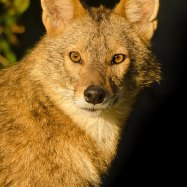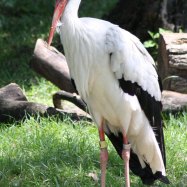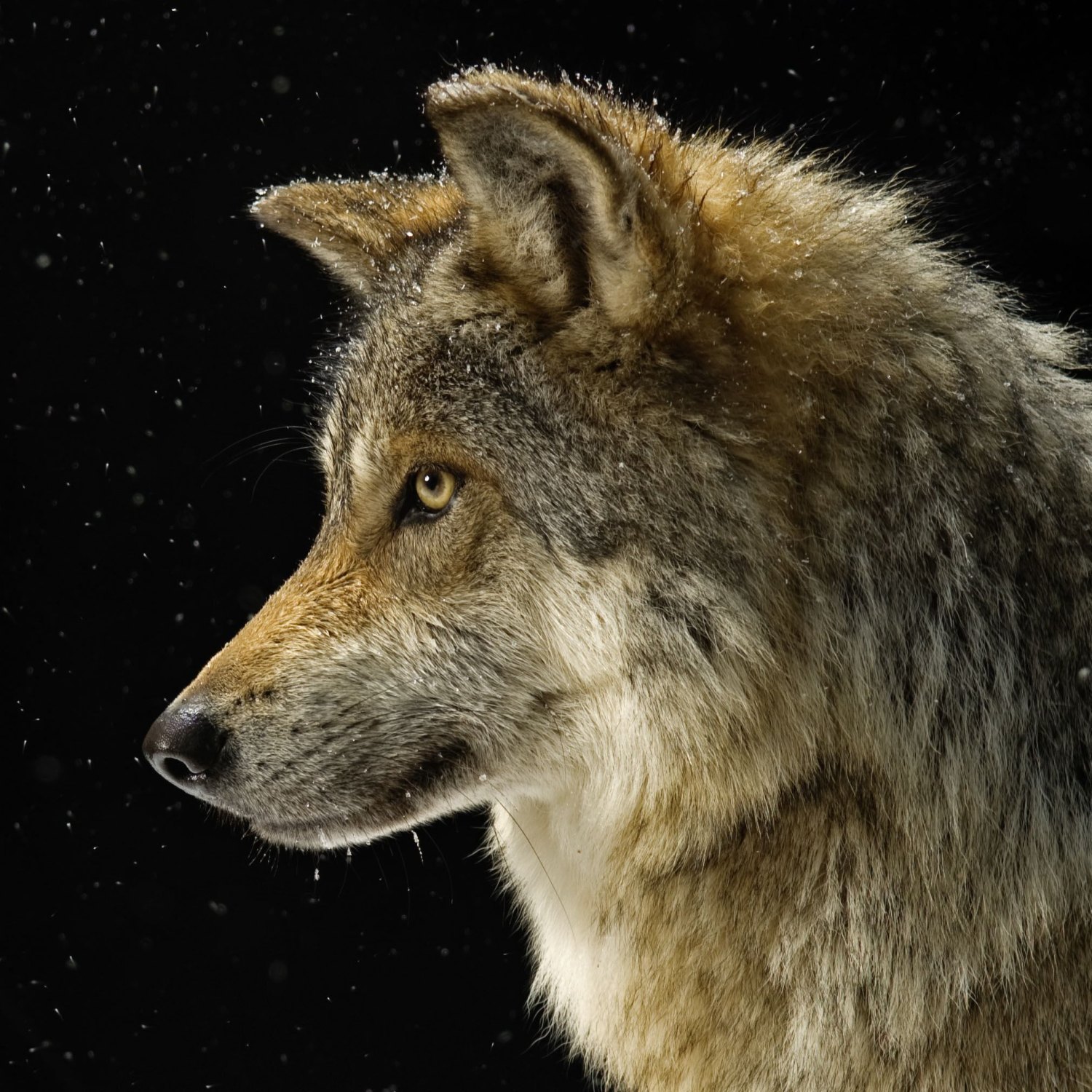
Wolf
4.5 to 6.5 feet (1.4 to 2 meters)
Wolves are powerful and intelligent creatures belonging to the Canidae family. Ranging from 4.5 to 6.5 feet in length, they can be found in various regions. With an athletic and streamlined body shape, they are skilled hunters and important members of their ecosystem.
Animal Details Summary:
Common Name: Gray Wolf
Kingdom: Animalia
Habitat: Forests, mountains, tundra, grasslands
The Majestic Gray Wolf: A Powerful and Intelligent Carnivore
The gray wolf, also known as Canis lupus, is a fascinating and charismatic animal that has captured the interest of humans for centuries. With its striking appearance, powerful body, and intelligent behavior, this carnivore continues to inspire artists, writers, and conservationists alike.Found in North America, Europe, and Asia, the gray wolf has been an important part of ecosystems for thousands of years. Let's take a closer look at this magnificent creature and discover why it deserves our admiration and protection Wolf.
Incredible Taxonomy and Distribution
Before we dive into the fascinating characteristics of the gray wolf, let's first understand its taxonomy and distribution. Scientifically classified as Canis lupus, the gray wolf belongs to the animal kingdom of Animalia, the phylum of Chordata, and the class of Mammalia.As part of the order Carnivora, the gray wolf shares its family Canidae with other well-known animals such as coyotes, foxes, and domestic dogs. Within the Canis genus, the gray wolf is closely related to other wolves, including the red wolf and the Indian wolf.
When it comes to geographical distribution, the gray wolf has a vast range and can be found in various habitats across North America, Europe, and Asia. In North America, it roams from Alaska and northern Canada to the Rocky Mountains and the Great Lakes region. In Europe, the gray wolf can be found in countries such as Russia, Poland, and Italy. In Asia, it is commonly found in China, India, and Mongolia.
An Adaptable and Resourceful Habitat
The gray wolf is an adaptable species that can thrive in a variety of habitats, including forests, mountains, tundra, and grasslands White Crowned Sparrow. This versatility is due to its incredible ability to adjust its lifestyle and hunting strategies to the environment it inhabits.For instance, in forested areas, wolves rely on their excellent sense of hearing and smell to locate prey such as deer, elk, and moose. They also use their athletic and streamlined body shape to navigate through dense vegetation and chase their prey. In contrast, in open grasslands and tundras, wolves use their endurance and teamwork to pursue prey over long distances.
Furthermore, the gray wolf is also able to survive in harsh and extreme environments, making it one of the most widespread mammals in the world. In fact, some populations of gray wolves have been found living in the Arctic Circle, where temperatures can drop as low as -40°F.
A Carnivorous Lifestyle
As a member of the order Carnivora, it's no surprise that the gray wolf has a carnivorous diet. However, what is fascinating is its hunting behavior and feeding methods.Wolves are known to be opportunistic hunters and will feed on a wide range of prey, including small rodents, birds, and large ungulates like bison and moose. They are also known to scavenge for food, especially in areas where prey is scarce.
But what sets wolves apart from other animals is their cooperative hunting behavior and intricate social structure. Wolves live in packs, which can consist of 2 to 30 individuals, and have a complex social hierarchy led by an alpha male and female. This social structure allows them to work together when hunting, increasing their chances of success in bringing down larger prey.
Once a kill is made, the pack will feed together, with the alpha pair getting first access to the food. This well-organized and efficient feeding method allows the pack to consume a large amount of food quickly, ensuring their survival in harsh environments.
The Gray Wolf's Appearance
The gray wolf's appearance is one of the most recognizable and iconic features of this species. As the name suggests, its fur comes in shades of gray, but individual wolves can also have black, brown, and white patches on their coat.Their thick and bushy fur not only provides excellent insulation in cold climates but also helps them blend in with their surroundings when hunting. This is important, as their prey often relies on camouflage to avoid predators.
In terms of size, adult gray wolves can range from 4.5 to 6.5 feet (1.4 to 2 meters) in length and weigh between 40 to 175 pounds (18 to 79 kilograms). Male wolves are slightly larger than females, and size can also vary depending on the subspecies and geographical location.
One of the most striking features of the gray wolf is its piercing yellow eyes, which are highly adapted for hunting in low light conditions. This, coupled with its muscular and athletic physique, makes the gray wolf a formidable predator.
The Gray Wolf and Humans
Throughout history, the gray wolf has had a complex relationship with humans. It has been both feared and revered, considered a threat to livestock and a symbol of strength and freedom.Unfortunately, the wolf's interaction with humans has often resulted in conflict. As human populations continue to expand, wolves have lost much of their natural habitat, causing them to come into closer contact with humans.
In some areas, this has led to wolves being labeled as pests and hunted to near extinction. However, with increased awareness and conservation efforts, attitudes towards wolves are slowly shifting, and their populations are beginning to recover.
In countries such as the United States, wolf populations have been successfully reintroduced after being eradicated in the past. These efforts have not only helped restore balance to ecosystems but also helped the public understand and appreciate the important role wolves play in nature.
Protecting the Gray Wolf for Future Generations
Today, the gray wolf is listed as a species of least concern on the IUCN Red List, thanks to successful conservation efforts. However, this does not mean that the species is no longer in need of protection.Loss of habitat, conflicts with humans, and poaching still pose threats to the gray wolf's survival. It is crucial that we continue to educate the public about the importance of wolves in maintaining healthy ecosystems and the need to coexist with these magnificent creatures.
Efforts such as reintroduction programs, habitat restoration, and responsible land management can help ensure that future generations will still be able to admire and appreciate the remarkable gray wolf.
In Conclusion
The gray wolf is an incredible and complex animal that has captured our imagination for centuries. Its adaptability, social behavior, and hunting strategies continue to fascinate scientists and nature enthusiasts alike.However, it's also a species that faces numerous threats and needs our protection to ensure its survival. By understanding and appreciating the importance of the gray wolf in our ecosystem, we can work towards creating a future where humans and wolves can coexist in harmony. Let's do our part in safeguarding this majestic and intelligent creature for generations to come.

Wolf
Animal Details Wolf - Scientific Name: Canis lupus
- Category: Animals W
- Scientific Name: Canis lupus
- Common Name: Gray Wolf
- Kingdom: Animalia
- Phylum: Chordata
- Class: Mammalia
- Order: Carnivora
- Family: Canidae
- Habitat: Forests, mountains, tundra, grasslands
- Feeding Method: Carnivorous
- Geographical Distribution: North America, Europe, Asia
- Country of Origin: N/A
- Location: Various
- Animal Coloration: Gray, black, brown, white
- Body Shape: Athletic and streamlined
- Length: 4.5 to 6.5 feet (1.4 to 2 meters)
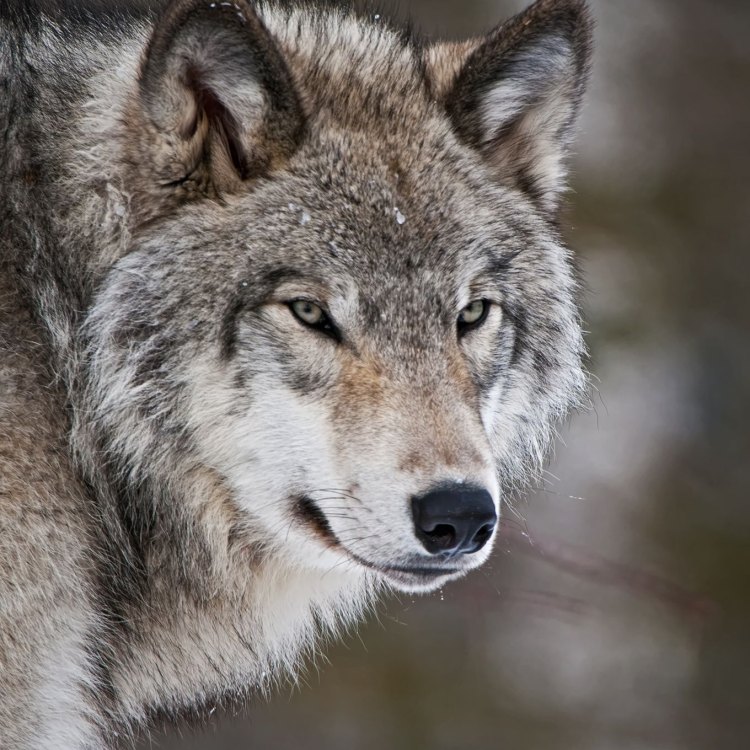
Gray Wolf
- Adult Size: Height: 2.6 to 3.9 feet (0.8 to 1.2 meters); Weight: 60 to 175 pounds (27 to 79 kilograms)
- Average Lifespan: 6 to 8 years in the wild, up to 13 years in captivity
- Reproduction: Sexual
- Reproductive Behavior: Breeding occurs once a year
- Sound or Call: Howls, barks, growls
- Migration Pattern: Some populations migrate seasonally
- Social Groups: Pack
- Behavior: Highly social and cooperative
- Threats: Habitat loss, hunting, climate change
- Conservation Status: Least Concern
- Impact on Ecosystem: Helps maintain balance by controlling prey populations
- Human Use: Fur, trophy hunting, study and conservation
- Distinctive Features: Large size, bushy tail, strong jaws
- Interesting Facts: 1. Wolves are highly intelligent and have complex communication systems. 2. They can adapt to various habitats, including Arctic tundra and desert regions. 3. Wolves have a strong sense of family and highly organized social structures. 4. They have a wide range of vocalizations for communication. 5. Gray wolves are not always gray; they can have a variety of coat colors. 6. Wolves are apex predators and play a crucial role in maintaining healthy ecosystems.
- Predator: Apex predator, no natural predators
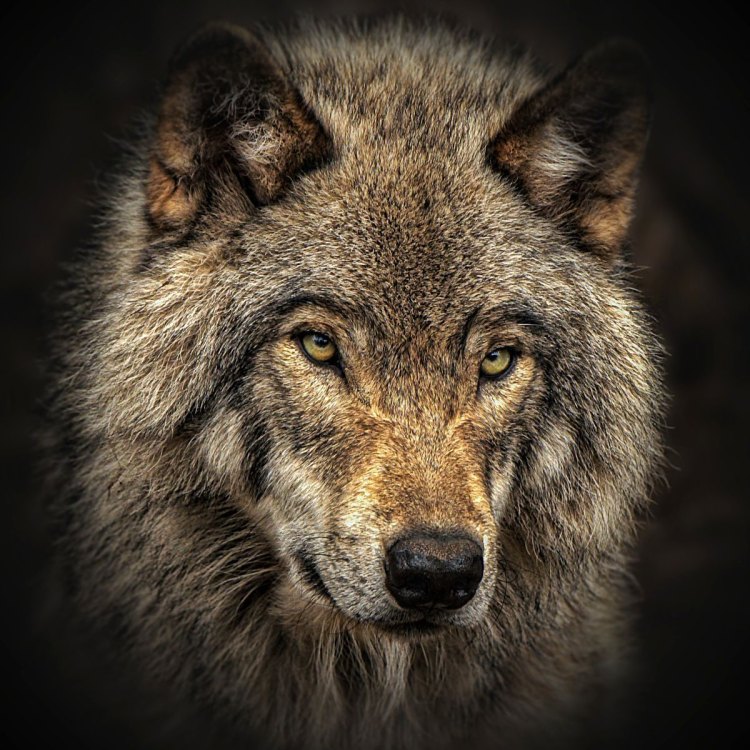
Canis lupus
The Majestic Wolfs: An Insight into the Lives of These Iconic Creatures
The wolf, often referred to as the symbol of the wild, has captivated the human imagination for centuries. With its distinctive features and complex behavior, the wolf is a fascinating creature that has been both feared and revered by humans. From ancient mythologies to modern-day conservation efforts, the wolf has played a significant role in shaping human culture and the natural world.Adult wolves are magnificent creatures, standing at a height of 2 PeaceOfAnimals.Com.6 to 3.9 feet (0.8 to 1.2 meters) and weighing between 60 to 175 pounds (27 to 79 kilograms). They have a lifespan of 6 to 8 years in the wild, while those in captivity can live up to 13 years. Wolves are sexually reproductive and breeding occurs once a year. They have a varied repertoire of sounds, including howls, barks, and growls, which they use for communication.
One of the most intriguing facts about wolves is their highly social and cooperative behavior. They live and hunt in packs, which consist of up to 10 members Warthog. The pack includes an alpha male and an alpha female, who are the leaders and breeders. Other members of the pack include yearlings and juveniles. Wolves are incredibly intelligent, and their social structure is highly organized, with each member having a specific role to play.
Wolves are native to a range of habitats, from the Arctic tundra to desert regions. They are highly adaptable creatures and can survive in a variety of environments. Though they are known for their distinctive gray-colored fur, wolves can also have coat colors such as black, brown, and white. These colors provide camouflage and allow them to blend into their surroundings, making hunting easier.
Apart from their intelligence and social structure, wolves are also known for their communication skills. They have a wide range of vocalizations, including growls, howls, and barks, which they use to communicate with each other. Wolves have a complex communication system, which enables them to convey a wide range of messages, from warning of danger to coordinating a hunt.
The role of wolves in maintaining a healthy ecosystem cannot be overstated. As apex predators, wolves play a crucial role in keeping prey populations in check. They help to control the populations of herbivores, which in turn helps maintain the balance of plant life. By culling old and weak prey, wolves ensure that the strongest and healthiest animals survive, which leads to overall healthier populations.
However, despite their critical role in the ecosystem, wolves face numerous threats. Habitat loss, climate change, and hunting are some of the most significant challenges they face. As humans continue to encroach on their natural habitats and drive prey animals to extinction, wolves are left with limited resources, making it difficult for them to survive. Additionally, hunting and trophy hunting pose a significant threat to wolves, as they are often targeted for their fur and perceived as a threat to livestock.
Fortunately, there have been significant efforts to conserve and protect wolves. The gray wolf, the most widespread species of wolves, is currently listed as "Least Concern" on the International Union for Conservation of Nature (IUCN) Red List. Many organizations and governments have implemented various conservation measures, including habitat protection and anti-hunting laws, to protect this iconic species.
Wolves also have significant human use and have played a role in human history for thousands of years. Their fur has been used for clothing and decoration, and they have also been studied for scientific and conservation purposes. In some cultures, they are seen as spiritual guides and symbols of power and strength.
In recent years, there has been a growing movement to reintroduce wolves into areas where they were previously eradicated. This is often met with resistance from farmers and ranchers, who fear for the safety of their livestock. However, studies have shown that the presence of wolves can actually lead to less harm to livestock, as they help control the populations of smaller predators, such as coyotes.
In conclusion, the wolf is a magnificent and iconic creature that has captivated humans for centuries. From its intelligence and complex communication systems to its role as apex predators, wolves play a significant role in the natural world. However, they also face numerous threats, and it is essential for humans to coexist with these creatures to ensure their survival. With continued conservation efforts and education, we can continue to appreciate and learn from these remarkable creatures and ensure that they continue to roam the wild for generations to come.

The Majestic Gray Wolf: A Powerful and Intelligent Carnivore
Disclaimer: The content provided is for informational purposes only. We cannot guarantee the accuracy of the information on this page 100%. All information provided here may change without prior notice.










